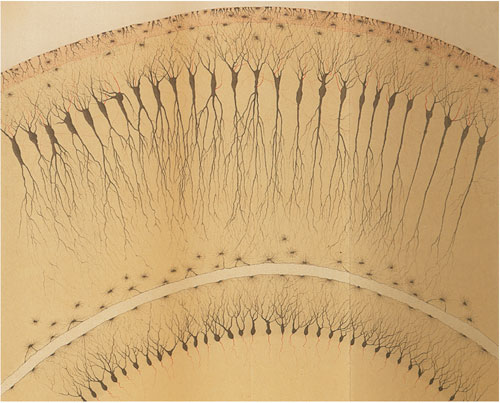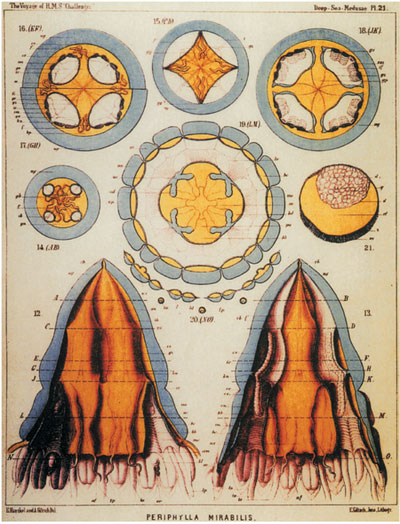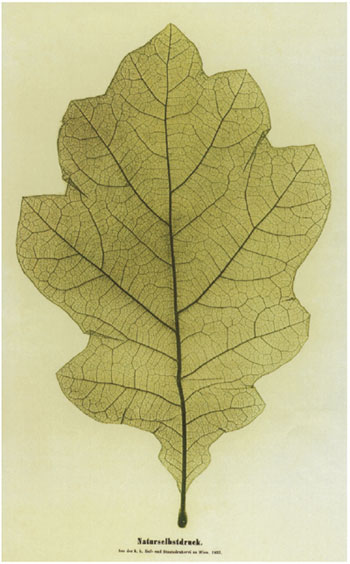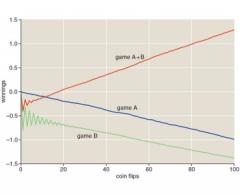
This Article From Issue
July-August 2008
Volume 96, Number 4
Page 332
DOI: 10.1511/2008.73.332
Objectivity. Lorraine Daston and Peter Galison. 501 pp. Zone Books, 2007. $38.95.
All scientists strive for objectivity; they congratulate themselves when they think they have attained it. But what exactly does objectivity mean? Is it a matter of following the right procedures when doing an experiment or making an observation? Or is it an attribute of the person doing science, something like emotional detachment or freedom from personal bias? Or is it something to do with making contact with things "out there" in the world of reality? And what do these different possible meanings have to do with one another? Is there any guarantee that following the proper procedures or having the ability to suppress one's emotions will disclose the truth about the way things really are?
There has been quite a lot of debate about objectivity in recent years, some of it polemical rather than illuminating. On the one hand, some scientists have flocked to the banner of objectivity, hoisting it alongside other banners labeled "truth," "rationality" and "the scientific method" to defend against what they take to be attacks on science itself. On the other hand, there have been critics who declare that scientists' claims to objectivity are a sham, that all purported facts reflect the partial perspectives of those who produce them, that there is no escaping the biases that are due to individuals' interests, background, race and gender.
Lorraine Daston and Peter Galison, two of today's leading historians of science, believe that a historical perspective can cut through these tangled arguments to help us understand what objectivity is—or at least how it has worked in scientific practice. Their book Objectivity is deeply thoughtful, thoroughly researched and beautifully illustrated. It makes a persuasive case that the modern notion of objectivity emerged only in the mid-19th century. It was then that objectivity prevailed as what the authors call an "epistemic virtue"—that is to say, a moral attribute of the people who were recognized as makers of knowledge.

From Objectivity.
Even in a book as big as this one, it's not possible to tell the whole of this story. Instead Daston and Galison approach the topic through examining a particular genre of scientific publication: the collections of images, called atlases, used in such sciences as anatomy, botany, astronomy, physiology, cartography and meteorology. These visual images, many of them beautifully reproduced in color in this volume, were used as reference standards for identifying plants and animals, classifying clouds or galaxies, and mapping the human body or the surface of the Earth. Daston and Galison read all these pictures for what they reveal about the epistemic virtues held by those who made them. Objectivity, on this account, emerged as a dominant scientific ideal with the spread of new techniques of mechanical image-making in the mid-19th century—especially, but not exclusively, photography.
Before the rise of this "mechanical objectivity," the 18th century celebrated an ideal that Daston and Galison name "truth-to-nature." Botanists and anatomists of the Enlightenment, for example, tried to bring out the fundamental uniformity of nature concealed beneath its apparent diversity. They ignored the idiosyncrasies of individual specimens of plants and animals in an attempt to discern their underlying plan. Doing this required a compound of philosophical acumen and aesthetic taste, abilities that were thought to come more easily to independent gentlemen than to women or members of the laboring classes. Working artists were therefore supposed to take direction from learned naturalists, whose ability to see truth-in-nature was supposed to guide the artist's hand. The social hierarchy implied by this model was already being challenged in the late 18th century, but, as Daston and Galison note, the ideal of truth-to-nature continues to inform much scientific illustration to this day. Botanical or ornithological field guides show not a particular plant or bird, but rather a composite—an ideal member of each species. For the purposes of taxonomic identification, artists' ability to display the underlying uniformity of nature is still valued.

From Objectivity.
With the arrival of photography, a new kind of scientific image became possible: one in which individual specimens recorded their own traces, apparently without significant human intervention. This advance went along with an epistemic virtue that prized the mechanical recording of idiosyncratic details and assigned a passive role to the investigator. Daston and Galison give as an example pictures of snowflakes: Eighteenth-century drawings of them are idealized and symmetrical, whereas collections of photographs show that individual snowflakes are never perfectly proportioned. The authors are very insistent, however, that the ideal of mechanical objectivity cannot be identified with the technical innovation of photography.
For one thing, other techniques for mechanical recording, such as kymographs (which record changes in pressure by means of a stylus marking a rotating drum), were also pressed into the service of this ideal. And for another, photography itself can serve alternative ends, as when Francis Galton, the founder of eugenics, assembled composite photographs of people that were meant to show ethnic or social "types." Galton believed in something like the old truth-to-nature ideal, although his technique used photography rather than drawing, and his specimens were not plants but immigrants and criminals from the streets of London.
Mechanical objectivity was more than just a technique; as an epistemic virtue it demanded certain qualities of the investigator, or as he was coming to be known (and it typically was a he), the "scientist." As an ideal, the 19th-century scientist was supposed to be self-disciplined and self-effacing, acting in a machinelike way that did not express individual subjectivity or emotion. As Daston and Galison note, ancient traditions of asceticism and self-cultivation—or what the philosopher Michel Foucault called "technologies of the self"—were drawn upon in forming this ideal.
In this connection, the authors' work overlaps with Rebecca Herzig's fascinating book, Suffering for Science (2006), which they do not cite. Herzig shows just how extraordinary was the suffering to which 19th-century scientists subjected themselves in the pursuit of knowledge. X-ray pioneers who willingly surrendered their limbs to the rays knowing that they risked injury, and polar explorers who ventured to their deaths in the Arctic, for example, displayed the extremes of heroic self-sacrifice that the ideal seemed to demand. Only by resolutely suppressing the scientist's self, it was thought, could knowledge be freed from all taint of subjectivity and rendered purely objective.

From Objectivity.
It is not really surprising that such a strenuous notion of epistemic virtue should have been too much for many to live up to. By the end of the 19th century, mechanical objectivity was being called into question as it began to appear that the traits of individual observers and experimenters could not be entirely excluded from their scientific findings. One response was the resort to what Daston and Galison call "structural objectivity," the trend in mathematics, physics and philosophy to exclude images and ordinary language entirely from scientific discourse. If the laws of physics or arithmetic could be reduced to the form of relations within a purely logical structure, then perhaps science could conquer individual subjectivity. Such, at least, was the hope of Henri Poincaré, Gottlob Frege, Rudolf Carnap and others. An alternative response was to make a new epistemic virtue from necessity, recognizing the impossibility of pure mechanical objectivity and formulating a new ideal that the authors call "trained judgment."
In the 20th century, it came to be accepted that personal traits will always influence scientific observation but that they can nonetheless be cultivated to yield reliable knowledge. The training of laboratory personnel to interpret particle tracks on cloud-chamber photographs or lines on stellar spectra acknowledges that individual judgment is inescapable in science. For the same reason, hand drawing is favored over photography for certain tasks, such as diagramming brain lesions or mapping the Moon's surface. These skills require that investigators cultivate individual traits (in this case, their powers of observation and drawing ability) as a component of their expertise, rather than suppressing their individuality to strive after absolute objectivity.
Daston and Galison's survey traces the history of the epistemic virtues that have left a legacy in our current muddled notions of objectivity. At the end, they look forward briefly to the development of the fields of virtual reality and nanotechnology, in which we can expect new notions of the character of scientific knowledge and its moral dimension to arise. But their primary focus is historical, in a book that is both remarkably ambitious and strategically limited in its scope.
The authors have an astonishing command of the historical record of the sciences in several nations and periods. They move with facility between profound philosophical analysis and detailed accounts of the practices of many scientific disciplines. They give lucid accounts of the philosophical subtleties of Immanuel Kant and Foucault and of the meticulous technical work in such fields as neurophysiology and astronomy. Their aim is nothing less than to bring to light some of the fundamental structures of scientific knowledge over the past few centuries.
Still, Daston and Galison acknowledge that they have not been able to tell the whole history even of one epistemic virtue. Objectivity is not the only such virtue, and approaching it through the study of scientific images is not the only possible way. In the 20th century, social scientists and quantum physicists as well as philosophers have debated the topic of objectivity. Practitioners of the physical and social sciences have argued vigorously about whether they have achieved an objective understanding of the things they are studying. They have sought objectivity by methods very different from the creation of visual images—for example, by statistical analysis. Methods for analyzing quantitative data offer an alternative path to the goal of objectivity, one that historians have shown was just as important as the use of images.
Daston and Galison's book will take its place among the most distinguished histories of the making of scientific knowledge. In recent years, scholars have been uncovering the historical roots of many of the elements conventionally seen as part of the scientific method: facts, experiments, proof, evidence, quantitative reasoning and so on. Daston and Galison advance these inquiries a good deal, especially because their conception of these methodological precepts as "virtues" links issues of practice to those concerning the identity of the practitioner. As they show in connection with objectivity, particular epistemic virtues demand a particular kind of scientific "self." When factual claims are evaluated, the persona of the scientist is as much at stake as the procedures that were followed. And the cultivation of the self—the formation of the scientific identity—is as much a part of the history of science as the development of methods or the growth of the knowledge they produce. Daston and Galison have provided an outstanding model of a history that attends both to scientific methods and to scientists' self-cultivation.

American Scientist Comments and Discussion
To discuss our articles or comment on them, please share them and tag American Scientist on social media platforms. Here are links to our profiles on Twitter, Facebook, and LinkedIn.
If we re-share your post, we will moderate comments/discussion following our comments policy.